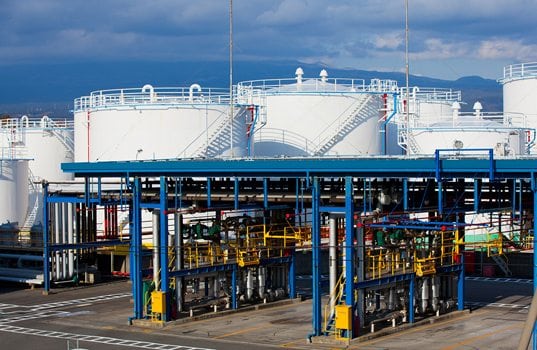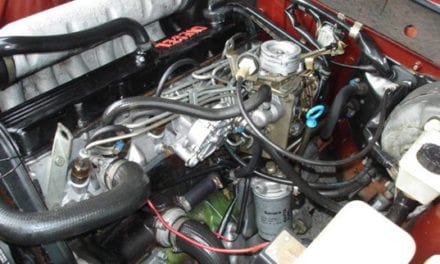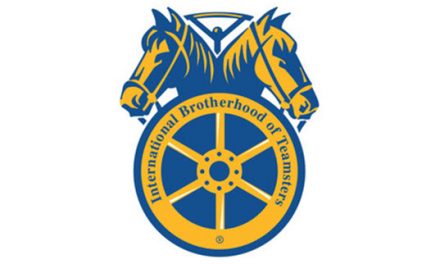By Mark Garton, senior product manager and Micki Verhagen, product manager, Schneider Electric
In today’s hectic world, terminal managers face many challenges from continually improving the process of efficiently and accurately loading and unloading product to managing the effects of market volatility on the supply chain. The continuum of suppliers, terminals and marketers face different issues depending on geography, as well, with European terminals becoming increasingly automated and interconnected with suppliers, while new standards and requirements around emissions and security keep operators on their toes.
Managing these issues across the downstream spectrum requires suppliers, terminal operators and marketers to look for solutions that take them on in an integrated approach. In particular, as terminal operations become increasingly automated it is important that those systems incorporate not only elements that ensure efficient and accurate product loading, but also ensure the physical and digital security of the facility. These will all drive towards the ultimate goal of the right carrier receiving a full load with the correct product each and every time.
Operational Challenges
The industry is responsible for the efficient downstream distribution of fuels and other refined products through a network of equity and third-party owned terminals throughout North America. Real-time data of when and where product is available throughout the entire evolving network is needed in order to manage position and exposure, while also controlling opportunistic buying and arbitration of product. Tightening supplies, competitive markets and the growing use of third-party terminals put increasing pressure on terminal managers to deliver on these promises.
Recent market volatility and higher product costs have led some sellers to keep less inventory on hand, and have made buyers more concerned about physical security. Terminal operators must strike a balance between servicing their customers while also operating in a cost-efficient manner. In addition, the rapid growth in both biofuels and crude oil means that more product is being delivered by rail and truck as opposed to pipeline, and terminal operators must be able to manage the alternative offloading process efficiently and safely.
While terminal automation may be most associated with automated loading, it is the ability to manage bill of lading (BOL) transactions, credit limits and product allocations with the efficiency, cost-effectiveness and real-time intelligence required by today’s market that turns the above challenges into opportunities.
With blending recipes changing from customer-to-customer and from season-to-season, suppliers need accurate and up-to-date information on the various products and recipes being loaded. Integration between the terminal automation system and a supply management system is key so suppliers can view the amounts of blends, components, neats and additives that were loaded, along with the products’ temperature and gravity. This includes viewing the total amount of product loaded on the BOL.
While terminal automation and supply management solutions have been in production for over 20 years, current market conditions establish the new standard for management and communication of terminal credit and product allocations. In particular, as refiners increasingly sell off proprietary terminals and distribute over a network of third-party terminals, they need effective solutions to manage credit limits and product allocations and communicate that to terminal managers and terminal automation systems to ensure steady availability of product.
PIDX Standards
European terminal operators are beginning to realize the benefits of connectivity and standardization amongst terminal automation systems.
The PIDX Standards were created and are being implemented in an effort to reduce the fractured nature of European laws and business practices. For major suppliers, this is particularly important to reduce the inefficiencies of having to adapt distribution practices on a country-by-country basis. While implementing the PIDX standards may sound complex, in reality it is a relatively low-intensity adoption, especially if the terminal already uses a TAS that was designed with this kind of integration in mind.
Terminal operators in Europe can expect a push from the major international suppliers to increase connectivity between their TAS and supply management systems.
New Security Threats and Regulations
Access controls are an essential element of physical terminal security to prevent unauthorized access to the facility and its products. The US Coast Guard – Port Security Units (PSU) have increased focus on this with stringent security requirements, presenting challenges for terminal managers. Coast Guard inspectors and captains of the port in several areas of the country have ordered terminals to employ 24-hour guards or use personnel to conduct 24-hour screening of all incoming vehicles and railcars, regardless of the previously approved security measures already in place at the terminal.
Unfortunately, security threats are increasingly coming through wires and cables instead of the access gate. Cyber security is a significant concern in many critical industries, including downstream oil and gas. In a recent annual review, a team at the Department of Homeland Security counted 198 incidents of attack on critical computer infrastructure in fiscal year 2012. The events reported ranged from the use of malware to sabotage systems to phishing attacks for retrieving sensitive information. In roughly 40 percent of those cases, the target was the energy sector – “an alarming rate,” the report said.
The future will hold new challenges for security; while the depth of the implementation is yet unknown, biometrics is likely to become a requirement of the TSA and Coast Guard for terminals, particularly those handling highly flammable materials. This could cause issues in colder climates, and overall the implementation of these programs is something that terminal operators should be at least considering when working with terminal automation providers.
As terminal automation increasingly interfaces with the Internet, particularly through supply management systems that manage credit limits and product allocations across a network of terminals, this is a security threat that terminal managers need to be increasingly aware of. The more connection points between systems, the more penetration points there are for an external threat to exploit. This is why fully integrated supply management and terminal automation systems are critical to the digital security of terminals.
Security and Efficiency Through Integration
Security needs to be integral to every level of the operation, from level zero at the field I/O, to the host systems and up to the corporate layer. Suppliers, and terminal operators, need cost-effective solutions that provide centralized, consistent management of product across terminal networks, whether proprietary or third-party.
Through the integration of supply management and terminal automation, terminal operators gain confidence that their terminal automation system is granting access to the proper carriers and providing them with adequate, accurate and authorized product, reducing the time and resources spent on physical security and oversight. Automated BOL reduces back-office administrative time, as well.
For suppliers, seamless integration provides the tools to maintain a satisfied customer base along with the timely intelligence to make smart business decisions. Suppliers see a reduction in administrative costs by being able to manage across the terminal network, rather than one-by-one, and shorter invoice to cash cycles.
Bottom line, the integration between terminal automation systems and supply management systems provides an end-to-end solution for the management of carriers, drivers and the ever changing recipes to meet the seasonal and legislative pressures on today’s operations.
As a global specialist in energy management with operations in more than 100 countries, Schneider Electric (http://www.schneider-electric.com) offers integrated solutions across multiple market segments, including leadership positions in utilities & infrastructure, industries & machines manufacturers, non-residential building, data centers & networks and in residential.








